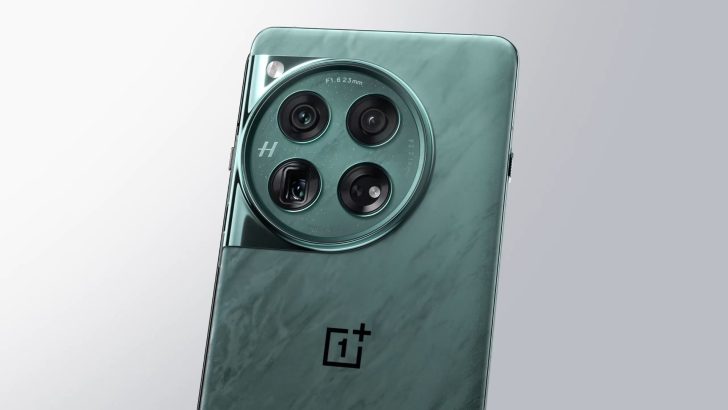The Google Pixel 8 is a powerful smartphone that offers a range of features and customization options. One of the key advantages of owning a Google Pixel 8 is the ability to unlock the bootloader, which allows you to install custom ROMs, root your device, and perform other advanced actions. In this comprehensive guide, we will walk you through the process of unlocking the bootloader on your Google Pixel 8, providing you with step-by-step instructions and valuable tips along the way.
Why Unlock the Bootloader?
Before we dive into the unlocking process, it’s essential to understand the benefits and implications of unlocking the bootloader on your Google Pixel 8. Unlocking the bootloader gives you complete control over your device, allowing you to customize it to your liking. Here are some reasons why you might want to consider unlocking the bootloader:
- Installing Custom ROMs: Unlocking the bootloader enables you to install custom ROMs, which can offer additional features, improved performance, and a more personalized user experience.
- Rooting Your Device: By unlocking the bootloader, you can gain root access to your Google Pixel 8, allowing you to remove bloatware, install powerful root-only apps, and customize your device at a deeper level.
- Advanced Tweaking: Unlocking the bootloader provides you with the ability to tweak various aspects of your device, such as the kernel, CPU frequency, and system settings, to optimize performance and battery life.
- Overcoming Limitations: Some carriers may impose restrictions on certain features or applications. Unlocking the bootloader allows you to bypass these limitations and take full advantage of your device’s capabilities.
It’s important to note that unlocking the bootloader will void your device’s warranty, and there are potential risks involved. Proceed with caution and ensure you understand the implications before proceeding.
Preparing for Bootloader Unlocking
Before you begin the bootloader unlocking process, there are a few essential steps you need to take to ensure a smooth and successful procedure. Let’s go through each of these steps in detail:
Step 1: Backup Your Data
Unlocking the bootloader will erase all data on your Google Pixel 8, so it’s crucial to back up any important files, photos, contacts, and app data before proceeding. You can use Google’s cloud backup services or transfer the files to an external device for safekeeping.
Step 2: Install ADB and Fastboot Tools
To unlock the bootloader, you’ll need to have ADB (Android Debug Bridge) and Fastboot tools installed on your computer. These tools allow you to communicate with your device and execute the necessary commands. Here’s how to install them:
- Visit the Android SDK Platform-Tools website (https://developer.android.com/studio/releases/platform-tools) and download the latest version of the tools for your operating system.
- Extract the downloaded ZIP file to a location of your choice on your computer.
- Add the extracted folder to your computer’s PATH environment variable. This step will ensure that you can access the tools from any command prompt or terminal window.
Step 3: Enable Developer Mode and USB Debugging
Before you can proceed with unlocking the bootloader, you need to enable Developer Mode and USB Debugging on your Google Pixel 8. Here’s how to do it:
- Open the Settings app on your device.
- Scroll down and tap on “About Phone.”
- Locate the “Build Number” entry and tap on it seven times. After a few taps, you’ll see a message indicating that Developer Mode has been enabled.
- Go back to the main Settings screen and tap on “System.”
- Scroll down and tap on “Advanced.”
- Tap on “Developer options.”
- Toggle the “Developer options” switch at the top of the screen to enable it.
- Scroll down and locate the “USB Debugging” option. Toggle the switch next to it to enable USB Debugging.
Step 4: OEM Unlocking
To unlock the bootloader on your Google Pixel 8, you need to enable OEM unlocking. This option allows you to modify the bootloader state on your device. Here’s how to enable OEM unlocking:
- Go to the “Developer options” screen following the steps outlined in Step 3.
- Scroll down and locate the “OEM unlocking” option.
- Enable the toggle switch next to “OEM unlocking.”
- You’ll be prompted to enter your device’s PIN, pattern, or password to confirm the action. Enter the required information to proceed.
With these preliminary steps completed, you’re now ready to begin the bootloader unlocking process for your Google Pixel 8. Follow the next sections carefully to ensure a successful outcome.
Unlocking the Bootloader
To unlock the bootloader on your Google Pixel 8, you’ll need to use the Fastboot command-line tool. This tool allows you to interact with your device while it’s in Fastboot mode, a special boot mode that enables low-level device control. Follow the steps below to unlock the bootloader:
- Power off your Google Pixel 8.
- Press and hold the Power button and the Volume Down button simultaneously until the device boots into Fastboot mode.
- Connect your Google Pixel 8 to your computer using a USB cable.
- Open a command prompt or terminal window on your computer.
- Navigate to the folder where you extracted the ADB and Fastboot tools.
- Type the following command to verify that your device is connected:
fastboot devices
- If your device is listed, proceed to the next step. If not, ensure that you have the necessary drivers installed and that your USB cable is properly connected.
- Enter the following command to initiate the bootloader unlocking process:
fastboot flashing unlock
- On your Google Pixel 8, you’ll see a screen with a warning message. Read the message carefully to understand the implications of unlocking the bootloader.
- Use the Volume buttons to highlight the “Unlock the bootloader” option.
- Press the Power button to confirm your selection.
- Your Google Pixel 8 will reboot into Fastboot mode again, with the bootloader unlocked.
Congratulations! You have successfully unlocked the bootloader on your Google Pixel 8. Your device is now ready for advanced customization and modifications. The next section will guide you through the process of setting up your device after bootloader unlocking.
Setting Up Your Device After Bootloader Unlocking
After unlocking the bootloader, your Google Pixel 8 will be reset, and all data will be erased. Follow these steps to set up your device and restore your data:
- Your device will boot into the Android system. Proceed with the initial setup process, including selecting your language, connecting to a Wi-Fi network, and signing in with your Google account.
- Once you’ve completed the initial setup, go back to the Settings app.
- Scroll down and tap on “System.”
- Tap on “Advanced.”
- Tap on “Developer options.”
- Scroll down and locate the “OEM unlocking” option.
- You’ll notice that the “OEM unlocking” option is now grayed out, and the text indicates that the bootloader is already unlocked. This confirms that you have successfully unlocked the bootloader.
- Continue setting up your device as you normally would, reinstalling apps, and restoring your data from the backup you created earlier.
Conclusion
Unlocking the bootloader on your Google Pixel 8 can open up a world of possibilities for customization and advanced tweaking. By following the step-by-step guide outlined in this article, you have successfully unlocked the bootloader on your device. Remember to proceed with caution, as unlocking the bootloader voids your device’s warranty and carries potential risks. However, when done correctly, unlocking the bootloader allows you to unleash the full potential of your Google Pixel 8, making it truly yours.
If you encounter any issues or have further questions, feel free to leave a comment below. We’re here to assist you on your tech journey, ensuring you have a seamless and rewarding experience with your Google Pixel 8.









3 comments